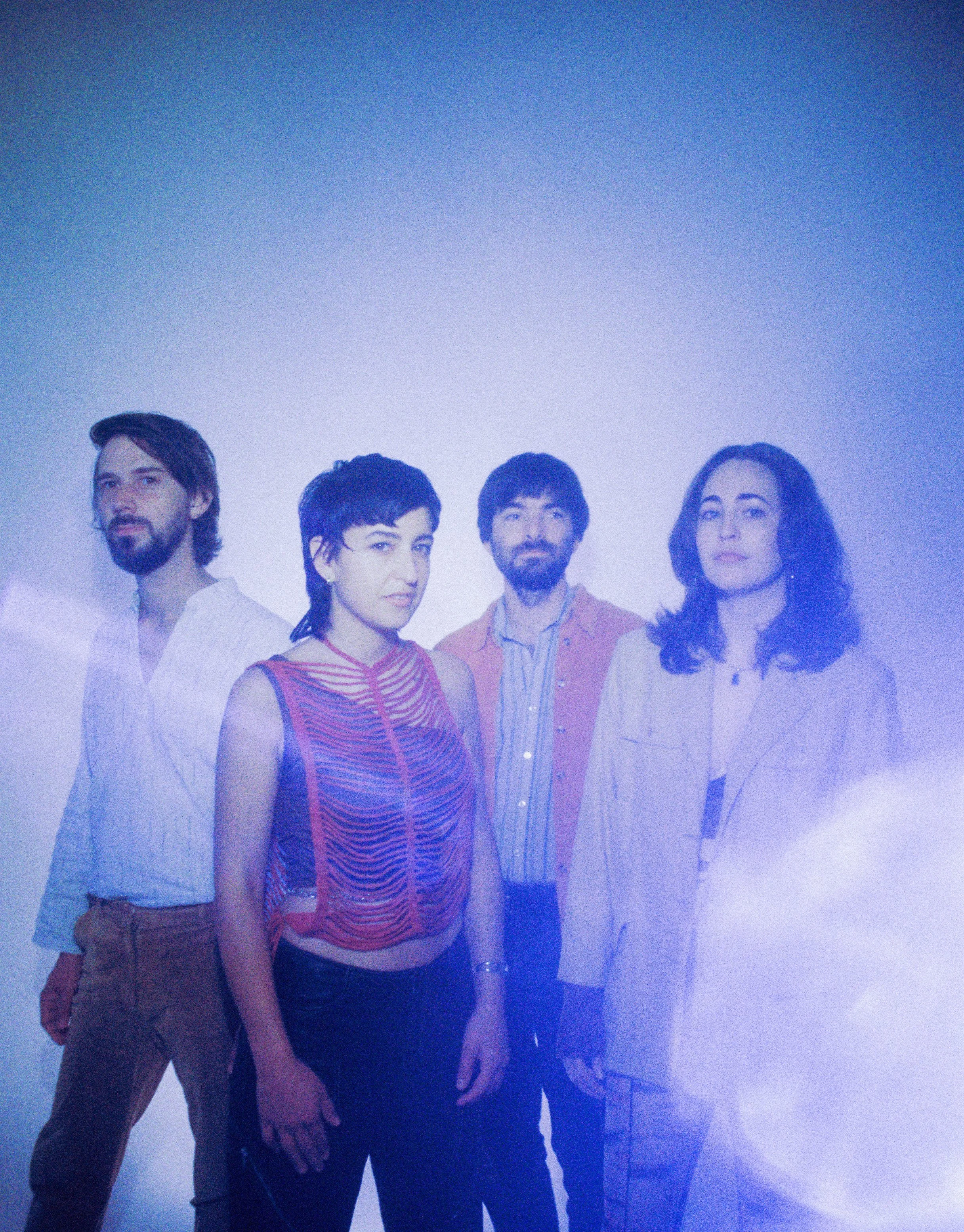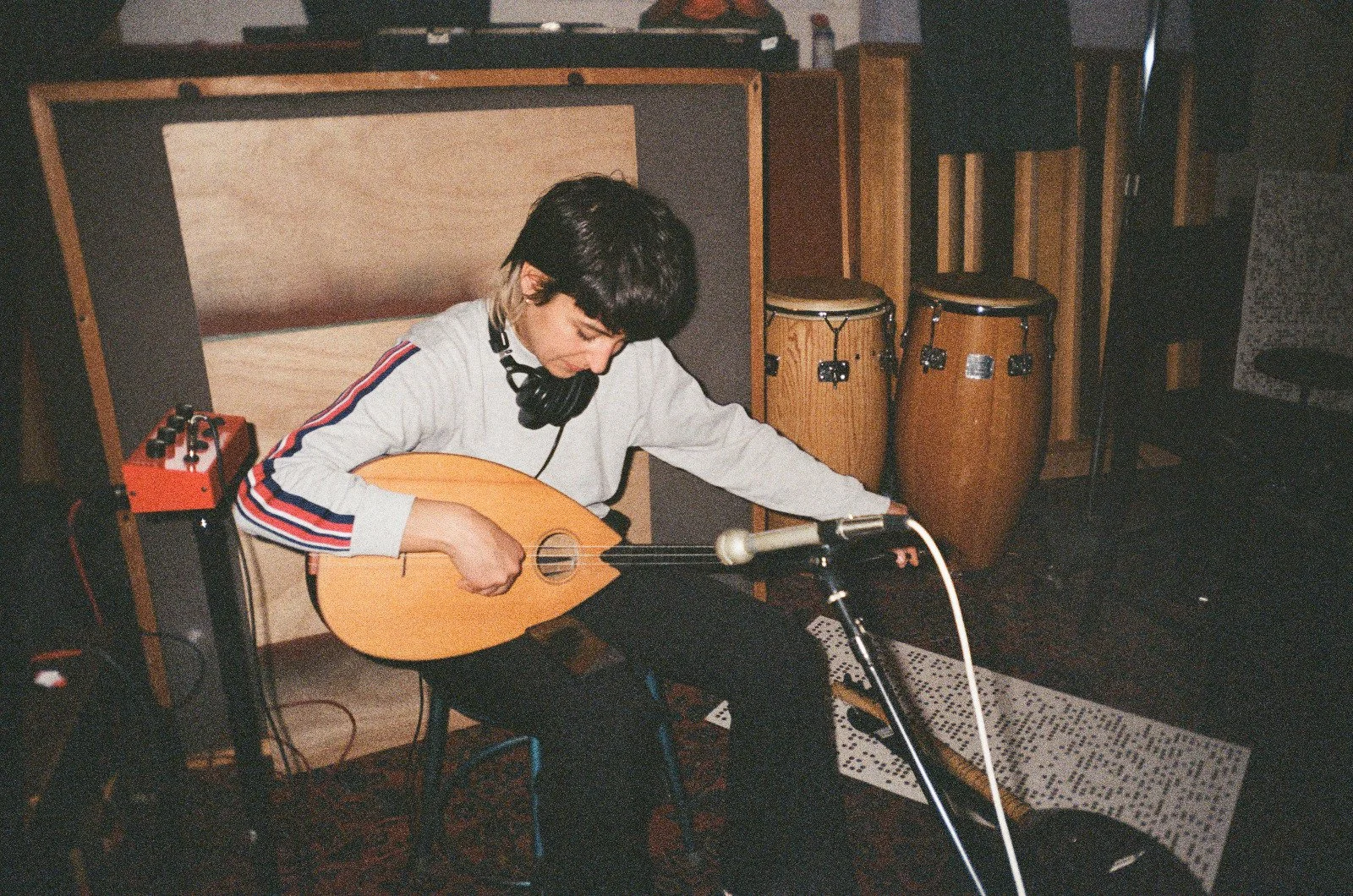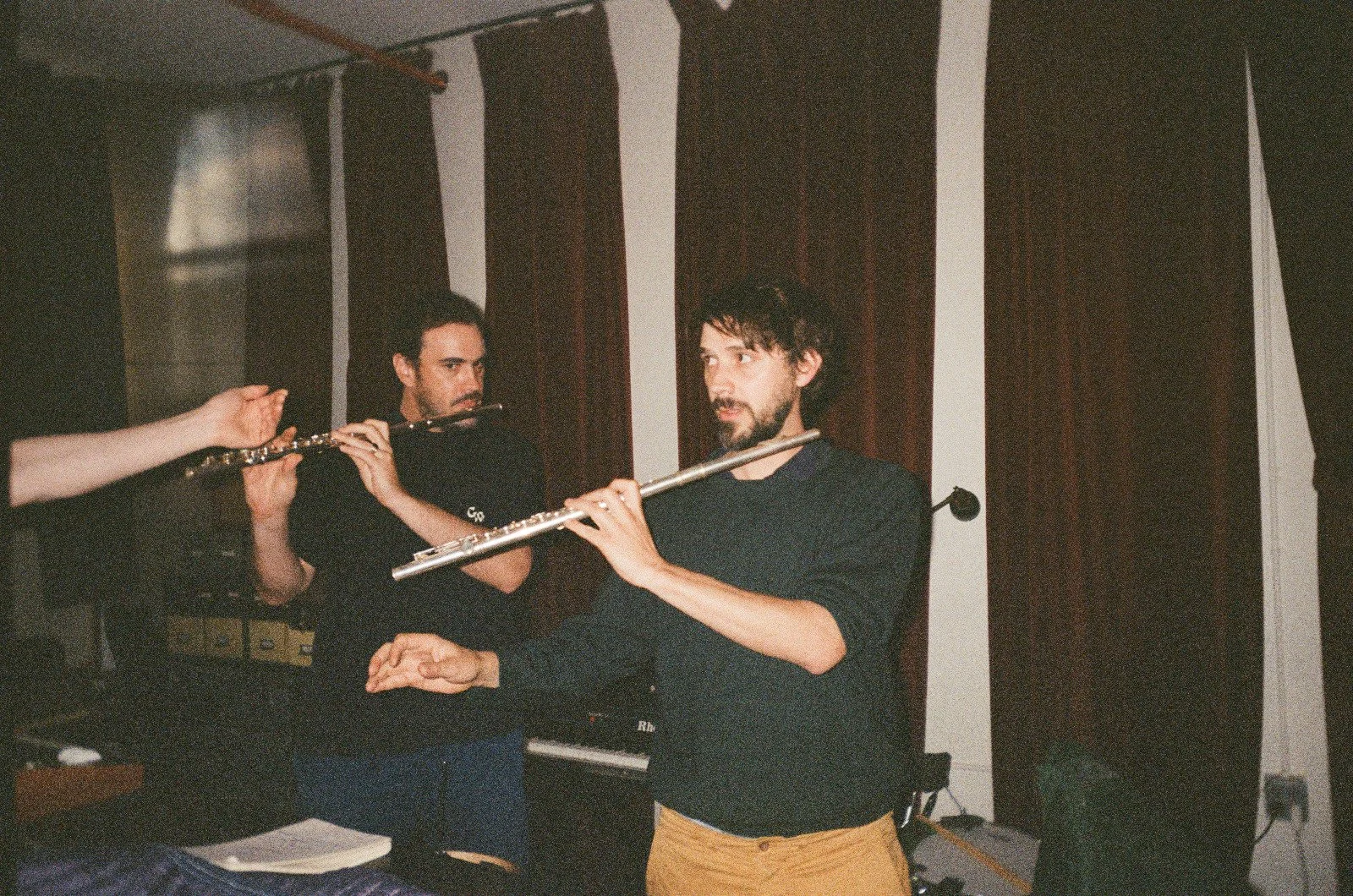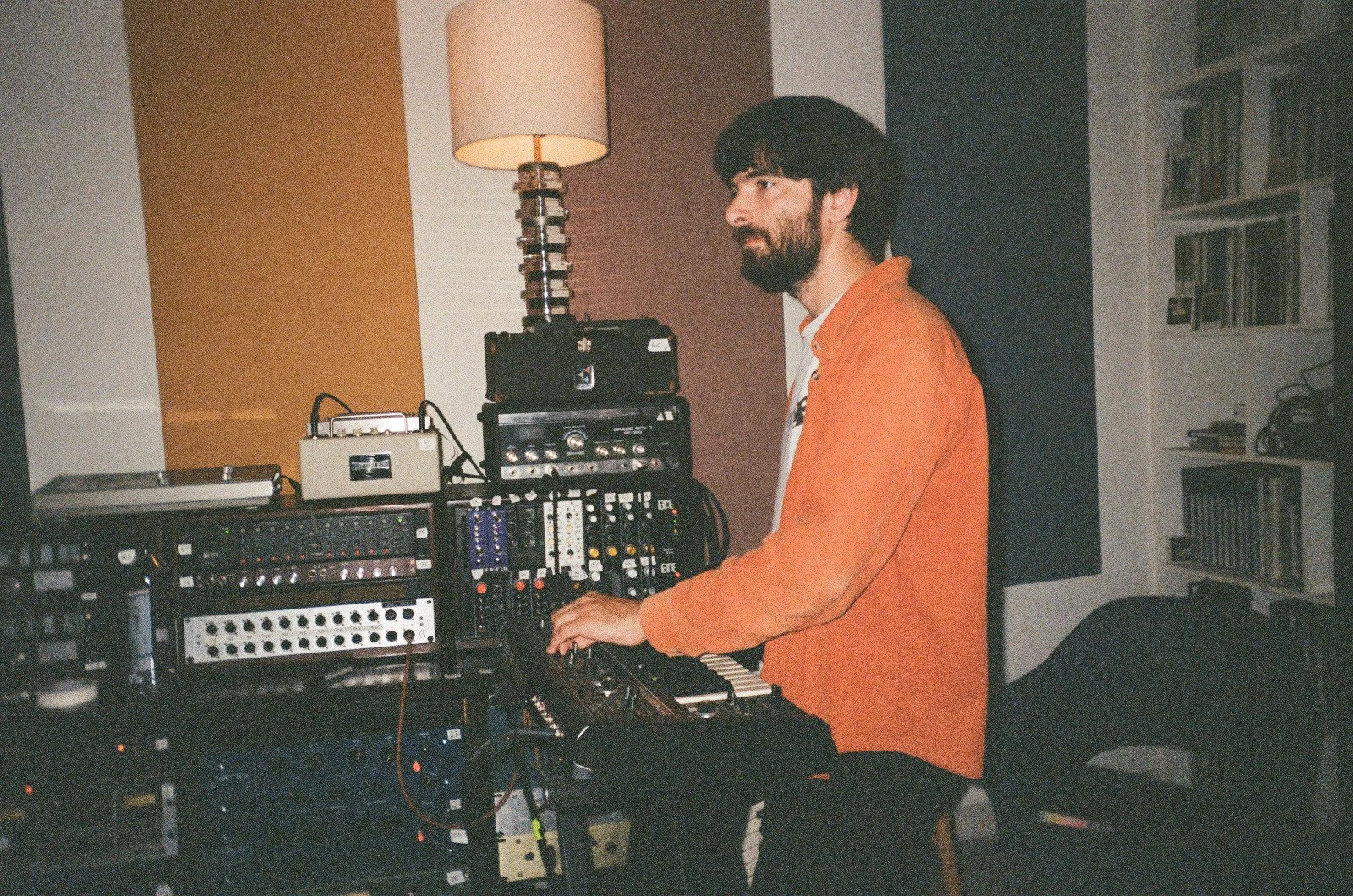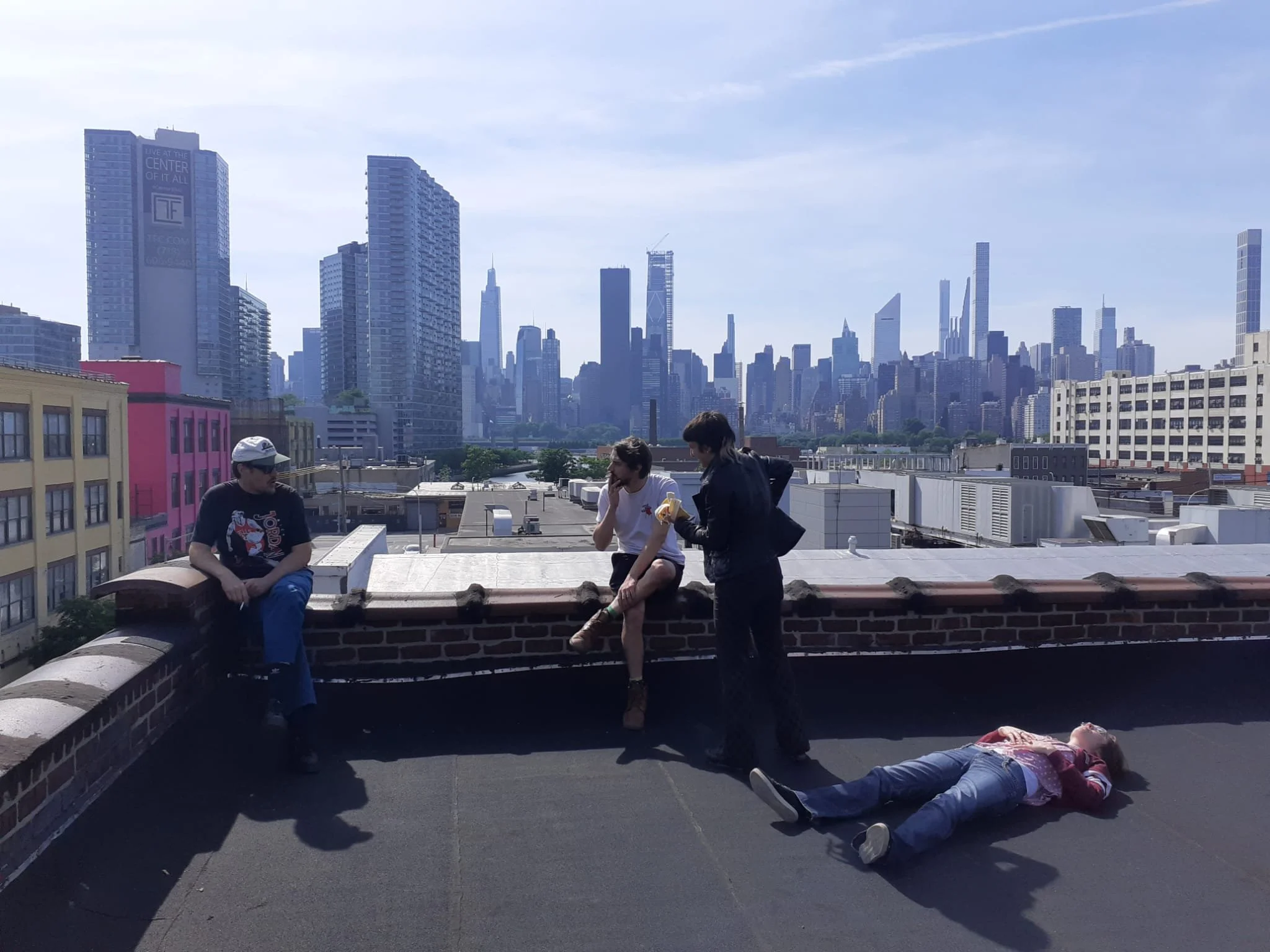Derya Yıldırım & Grup Şimşek - Yarın Yoksa
This week, Derya Yıldırım & Grup Şimşek release their third full-length studio album, Yarın Yoksa, via Big Crown Records. The album’s title translates to “If There Is No Tomorrow“ and explores personal pain and collective resistance in equal measure. A central thread of loss, longing, and hope for change runs throughout. Vital themes for trying times. The lyrics, performed entirely in Turkish, are poetic, rich in symbolism and metaphor, and paired with shifting musical accompaniments that allow each track to stand on its own while never compromising the cohesiveness of the project.
Since 2014, the band have been crafting a sound that has cemented them as one of the key custodians of the Anatolian rock tradition. Blending elements of psychedelia, folk, pop, and jazz, their music follows in the footsteps of icons like Barış Manço, Selda Bağcan, and Erkin Koray, to name just a few. These artists revolutionised Turkish music by fusing traditional Anatolian melodies with Western influences. Grup Şimşek not only honour this legacy but also push it forward, reinterpreting the sound for a modern audience while staying true to the form’s deeply emotional and political roots.
At the heart of Anatolian rock is a spirit of storytelling and social commentary and Grup Şimşek continues this tradition with their evocative lyrics and genre-blurring compositions. Much like their predecessors, they draw on the rich heritage of Turkish folk music while incorporating contemporary global influences. Their reinterpretation of “Nem Kaldı” introduced many new listeners, including us, to this style of music many years ago, and their latest album further showcases their ability to channel visceral and raw human emotion through hypnotic rhythms, soaring vocals, and lavish instrumentation.
With Yarın Yoksa, the band reaffirms their position as one of the most exciting contemporary voices in Anatolian rock. While their music is deeply rooted in the past, it feels as vital as ever, never relying on nostalgia or constrained by tradition. Instead, the band continues to breathe new life into a genre that was built upon the ideas of revolution, resistance, and emotional expression, proving that the spirit of the music is as powerful and as necessary as ever before.
Ahead of its release, we caught up with Derya, Helen, Graham and Antonin to discuss how the record came together and find out a little more about the inspirations behind it…
How and when did you begin work onYarın Yoksa?
Antonin: In 2023 we already had a couple of new songs in the making when Big Crown Records offered to record an album in their studio in NYC with Leon Michels. We got really excited about this idea and we all started to compose a lot of fresh material. We then worked on and developed the songs together, making them evolve from demos to pre-produced recordings. By the time we flew to New York in June 2024, the corpus of potential songs and arrangements was ready. But meeting Leon Michels and recording at Diamond Mine Studios was of course a game-changer. All the songs reached another level in terms of sounds, efficiency, fierceness and soulful orchestration.
Derya: Working on songs, albums and our music with Şimşek is always special because we all live in different countries. We only come together on carefully organised occasions at our different headquarters in Saint-Étienne, Chambéry, Graveleuse or Berlin. Since our time together is limited, our sessions are very focused and intense, allowing us to work live in a truly concentrated way. That’s what makes our collaboration so unique—everyone prepares as much as possible in advance, but each song has its own way of coming to life. Sometimes, the melodies already exist, and we develop ideas individually. Other times, a song takes shape spontaneously in the studio during pre-production. It’s been an exciting journey over the past years and we’re always discovering new creative processes along the way.
The record’s title translates to “If There’s Is No Tomorrow”, how did the world’s political landscape feed into the record? What other themes were influencing you when you were writing?
Helen: The title came after the record, once the lyrics had already taken shape through the writing team. So it would seem that the “world’s political landscape” came to life by means of our personal lives and the poetry of turning that into a body of work.
Derya: “Yarın Yoksa” explores themes of personal pain, collective resistance, and transformation, blending sharp observation with poetic intensity. The album balances loss, longing, and hope for change, creating a space where personal storytelling meets universal experiences. Also, by reviving and reinterpreting the three folk songs we chose, this album creates a universal language of music, where the emotions of Anatolia become a shared heritage for all. Through this lens, the music becomes a timeless expression of humanity, capable of resonating with new generations and across cultures.
What were you listening to when you started work on the project?
Graham: Well, as you may guess, as a band we spend a lot of time on the road listening to music together. Around the time we were working on the album, we listened to a lot of Egyptian/ Libyan funk and pop from the 80’s. Artists like Hamid El Shaeri or Al Massrieen certainly had an impact on our music. We also listened to new artists who explore cinematic and groovy sounds, like Sven Wunder, Frank Maston, Sholto… and of course El Michels Affair’s Yeti Season album which we particularly love. Some great Anatolian/ Turkish artists often come up in our playlists, such as Gülden Karaböcek, Gülcan Opel. We also love dub and reggae… the list is long !
Derya: I was drawn to music with a deep sensitivity, where each element carries essential meaning, and a few simple components can create something powerful. I listened to albums and special interpretations of folk songs, especially those where the singers have uniquely coloured voices and ornament in very specific styles. Yeti Season by El Michels Affair was also a major influence for me—it cleverly and playfully references music that feels deeply familiar, almost like the Turkish sounds of the ’60s and ’70s that evoke childhood memories. Albums that I really liked to listen to during the album process included The Rubáiyát Of Dorothy Ashby by Dorothy Ashby, Meyrik by Gülcan Opel, Güzellerin Dünyası by Selda Bağcan.
Where did you record the album, how did that affect its sound?
Antonin: The album was recorded at Diamond Mine Studios in New York. The sound they have there is very unique. The combination of extraordinary vintage gear and their house sound engineer Jens Jungkurth’s knowledge and sensitivity, paired with producer Leon Michel’s experience and creativity makes it such a special place. Fans of Big Crown Records will definitely recognise their trademark soul sound.
Graham: For sure! I would add that Leon & Jens are not only able to imprint their ‘touch’ to the sound of an album, but they also know how to push ideas and artistic choices to new places. It was inspiring and refreshing for us to record there because every song got its chance to sound special.
Derya: For me personally, as a Bağlama player, the recording process was incredibly exciting because I was ready to fully explore and experiment musically. We trıed out unconventional ideas—like playing the Saz through an oil can or recording it through a Leslie amp. These experiments led to new sounds that shaped certain songs in unexpected ways like the song “Yüz Yüze” for example. What I really appreciated was how open everyone was to trying things out together. There was a real sense of equality in the process—we learned from each other, listened closely, and created something truly special as a result.
Did you go into the studio with a specific vision for how you wanted the album to sound or did it evolve organically as you were recording?
Antonin: We all loved Leon’s productions and it definitely influenced the way we composed the album, creating imaginary bridges in our heads between his sound and our music. The reality was in fact better than what we were dreaming of, and the sound naturally evolved towards a more radical and powerful vision without losing DYGŞ’s authenticity.
Derya: To be honest, I went into the studio with more excitement than expectations. There were so many overwhelming emotions—having never been to New York before, being a huge fan of Leon, and suddenly having this incredible opportunity to spend nearly two weeks finalising and developing our music together. I was completely immersed in the experience, and the organic nature of our collaboration really took me by surprise. And also after getting to know the guys from Big Crown Records, it makes total sense what kind of people they are. Everything felt natural and on equal footing, and Leon’s ideas aligned beautifully with our vision. At times, his input challenged us, but in a way that was exciting and pushed our creative process forward. I truly believe the album would have sounded very different if we had worked on it alone. That’s why I find it so fascinating to see the direction it took, and honestly, I’m really proud of what we created together.
Were there any unexpected moments in the studio that changed the direction of the album in a significant way?
Helen: “Istanbul’un Kuşları” brought us some unexpected moments. We had almost given up on it, because the arrangement wasn’t really working. Then towards the end of the recording days, we were sitting and thinking of what to do next, and Leon suggested we try to do something new with that song. I was playing the drum beat on the back of a chair and we joked about using it in the recording. Next thing you know, Jens (the recording engineer at Diamond mine) is setting up a kind of standing drum kit around the chair and we’re turning the song into a live folk jam session.
Derya: One of the most special aspects of this recording was that most of the takes were done with the whole band playing together live in the studio. As a singer, I was in the recording room as well, and for some takes, we even kept the guide vocals. In fact, about half of the album consists of live takes with no vocal overdubs, which gives the record a unique energy. I really enjoyed this process because I love taking on challenges, and I appreciate the raw, natural feel that comes from these live moments—even when small imperfections happen. It makes the music feel more authentic and alive. I love that! I live for that!
What did Leon Michels bring to the project?
Helen: He brought a producer’s acute awareness of what is essential and necessary to an album, yet also his own musical sensitivity and creativity, which instantly opened up a new dimension to the album. I didn’t expect him to play with us and even write new parts for some songs. That really made the whole process feel fun and elevated it in the moment.
Derya: I think Leon was incredibly attentive and truly respected our ideas and the vision behind each song. One of the most impressive aspects of working with him was how we managed to shorten some of our songs without losing their essence. We tends to write long pieces—we love stretching out musical moments and fully immersing ourselves in them. With Leon, we embraced the challenge of refining our songs, making sure they had exactly the length they needed while keeping their soul intact. What continues to impress me is his deep musicality. He has a way of elevating melodies to another level, making them feel both fresh and deeply familiar at the same time. His approach often reminds me of Anatolian music, which is so close to my heart. When he played melodies for the recordings of “Bilemedim Ki” on the piano, it felt like a direct connection to my childhood—something remarkable, considering he didn’t grow up with this kind of music. His sensitivity and ability to absorb and reinterpret sounds in his own way made a huge impact on this album. I’m really grateful that he channelled his creative process into this project.
How would you describe the sound of Yarın Yoksa and how has it evolved from your previous releases?
Antonin: Leon Michels’s productions bring the drums, percussion and bass guitar in front of the mix in such an impactful, raw and warm manner. The instruments and vocals around that central block find a very special depth and texture. It is actually very different from the Dost series we produced ourselves, which had a more gentle sound, where keyboards, bağlama and guitar arrangements had a more central role in supporting Derya’s voice. Yarın Yoksa is like looking at Grup Şimşek’s music through a different prism, and we as a band love this new dimension !
Derya: The sound of Yarın Yoksa feels more open to the world—it’s an album that, in a way, has the potential to embrace more people with its sound. I’m not sure if that’s because we worked with a producer from a different background, or because, as a quartet, we essentially invited a fifth person into our creative process to shape the album into a complete, cohesive work. That’s what makes it so special.
Compared to the Dost 2, which was deeply rooted in our own musical world as a quartet, Yarın Yoksa marks a new chapter. With the Dost series, especially Dost 1 and Dost 2, we were focused on defining our identity as a band—exploring and solidifying our own sound. Those albums represented a peak in our self-produced work, where we really felt like we had captured our essence.
Working with Leon on Yarın Yoksa was a new milestone for us. It allowed us to take our sound in a different direction, integrating his perspective while staying true to our roots. The album still carries a strong connection to Anatolian music, not just as an inspiration but as something we actively preserve—evident in the three folk songs we reinterpreted alongside our own compositions. Instrumentally, the foundation of our sound remains, with groovy bass and drums, wah-wah guitar, Hammond organ, and vintage synthesizers, all centered around the saz (bağlama). But we also expanded our palette with elements like piano, congas, Turkish finger cymbals, more flutes. Another key evolution was having Helen Wells on drums—after three years of live shows, this was our first time capturing that dynamic in a studio setting, shaping a fresh and evolved sound.
What is your favourite track on the album? How did it come together?
Helen: “Bilemedim Ki” was really special, because we had worked for so many months on that song, and the drums were never quite right. When we got to Diamond Mine, I asked to try out the electric congas, a really fun, vintage percussion instrument, and we started a little jam of that song. It was really organic and later Leon said we should try a version like that. Those kinds of moments are just what I live for when it comes to live recording. Leon also joined us on the piano, with tape muting the strings. It was one of the first times we played with him as part of the band, and with a whole new-sounding instrument, him playing in quite a Baroque style.
Derya: My favorite track on the album is “Direne Direne” translated as “We Will Resist”. This song is one of the most meaningful songs we have written - a deeply personal piece that holds a special place for us as a band. Its a call for resistance!
“The justice carried in their chests / The might burning in flames” is one of the lines of the songs, or the hook “Yet, we will resist” captures the song’s core message - despite oppression and violence, the resistance remains. It stands out to me not only because of its strong lyrics but also because it shows new facets of us as a band, both musically and thematically. I feel that “Direne Direne” has a strong protest-like energy, and my favourite moment is the synthesizer section, where a simple motif plays on its own. There’s something essential and back to the roots about it—how a few elements can create such a strong impact. I also love how my vocals have a slightly distorted effect, almost like a megaphone, which adds an edgy character that fits the theme of the song perfectly. And what makes this song even more special, to have the stunning female-backing-vocals of the writers team Duygu Ağal, Tuğçe Kep and Helen Wells. Also having Elizabeth Pupo-Walker on congas brought a new drive and groove to the sound. We hadn’t used congas before, nor had we included additional percussionists in our recordings—until now. Previously, it was mostly family members contributing in different ways, like my father Mustafa Yıldırım reciting poetry on “Çocuklar 2” or my aunt Ayşe Yıldırım singing on “Ayşe Halam Arıyor”.
How do you hope people will listen to the record and what would you like them to take from it?
Antonin: We put a lot of ourselves into writing these tunes, and I hope people connect with the feelings they carry. I believe this is the best collection of songs we’ve ever put together on a record. On the other hand, I hope the brand new “NYC” sound brings new listeners and surprises our fans in a good way.
Helen: I hope they listen to it on vinyl, because it really belongs to that world of getting together with friends and appreciating music, or just being alone with a record and giving it the time of day. We’ve even got the lyrics printed in the album cover, so it could bring a really intimate connection with the listeners.
Derya: Our goal is to make this music accessible to people because Anatolian folk music comes from nature and was created by the people. Since we are influenced by folk traditions and the bağlama is a core element of our sound, we carry a heritage that, while rooted in Anatolia, can exist and resonate in different places around the world—we are living proof of that. That’s why one of our main hopes is that this music reaches people who may not be familiar with it yet. And besides, even though the album is entirely in Turkish, language is not a barrier. We truly believe that it can be understood and felt even by those who haven’t encountered it before. In the end, this music is for the people, and that’s what matters most to us.
Yarın Yoksa by Derya Yıldırım & Grup Şimşek is out March 14th via Big Crowd Records.

